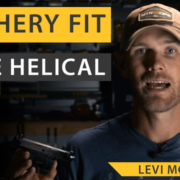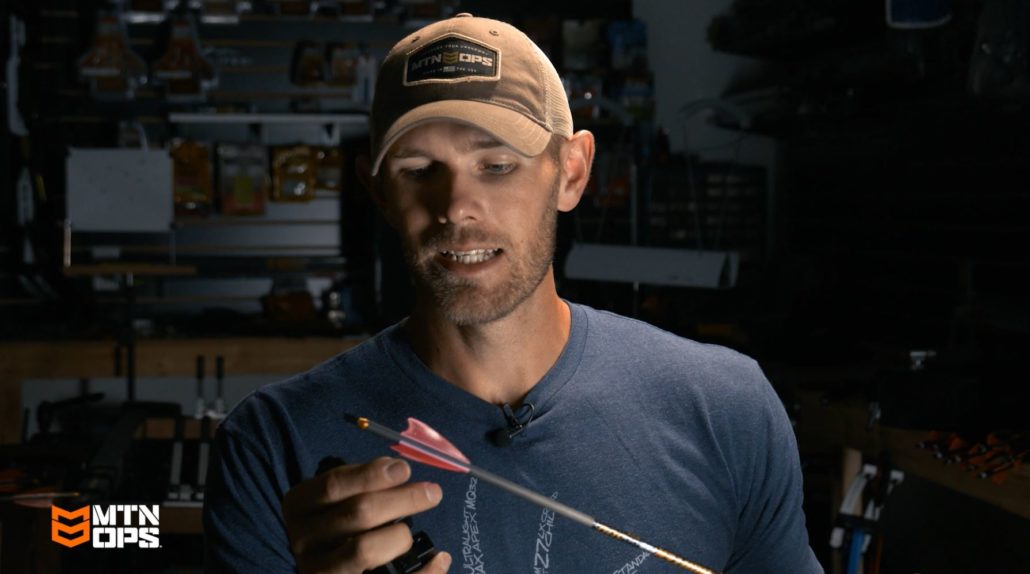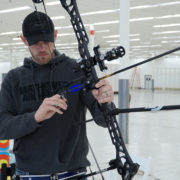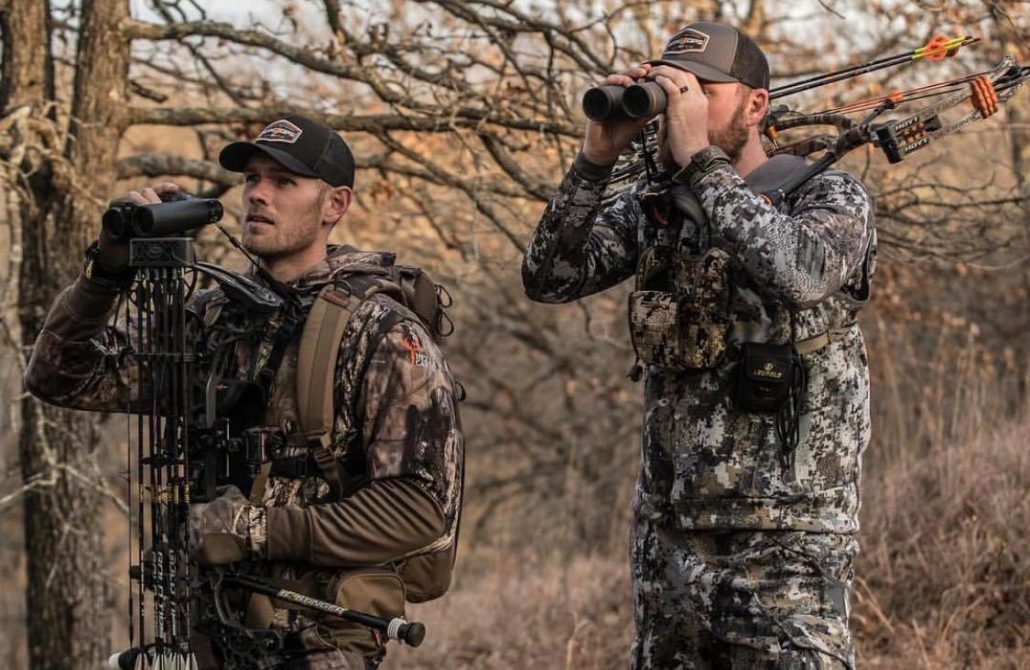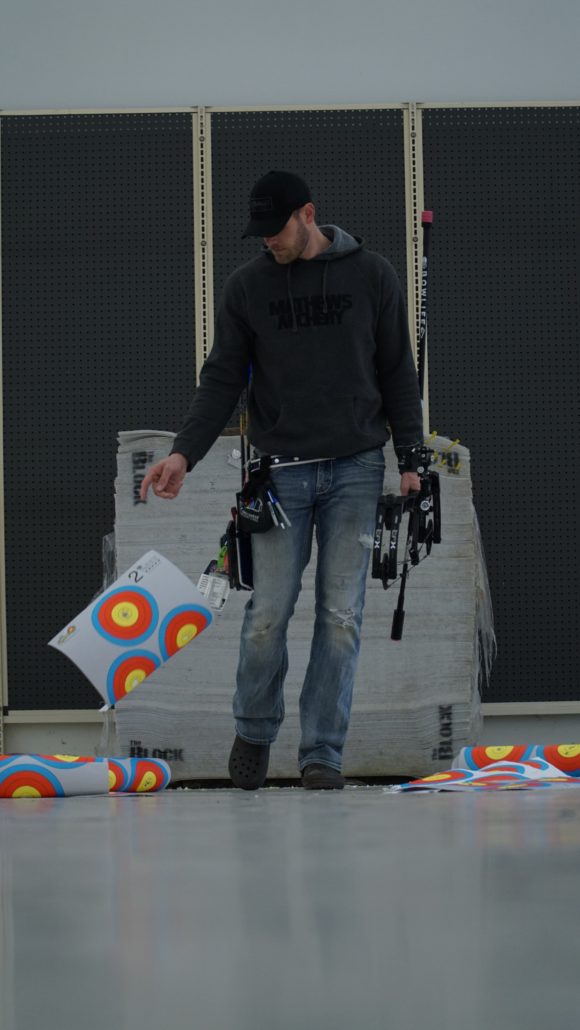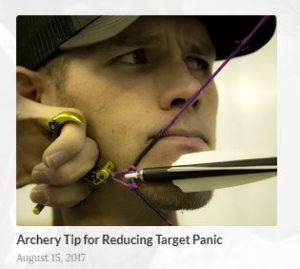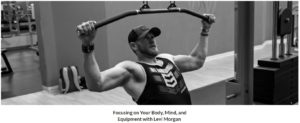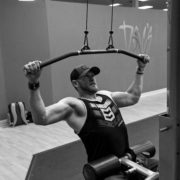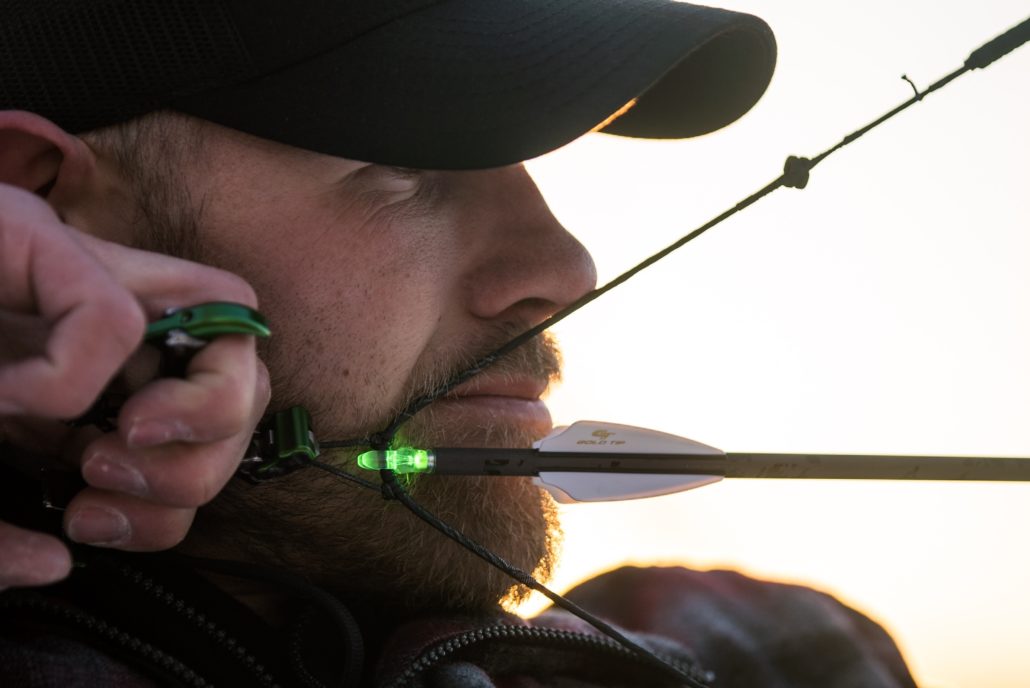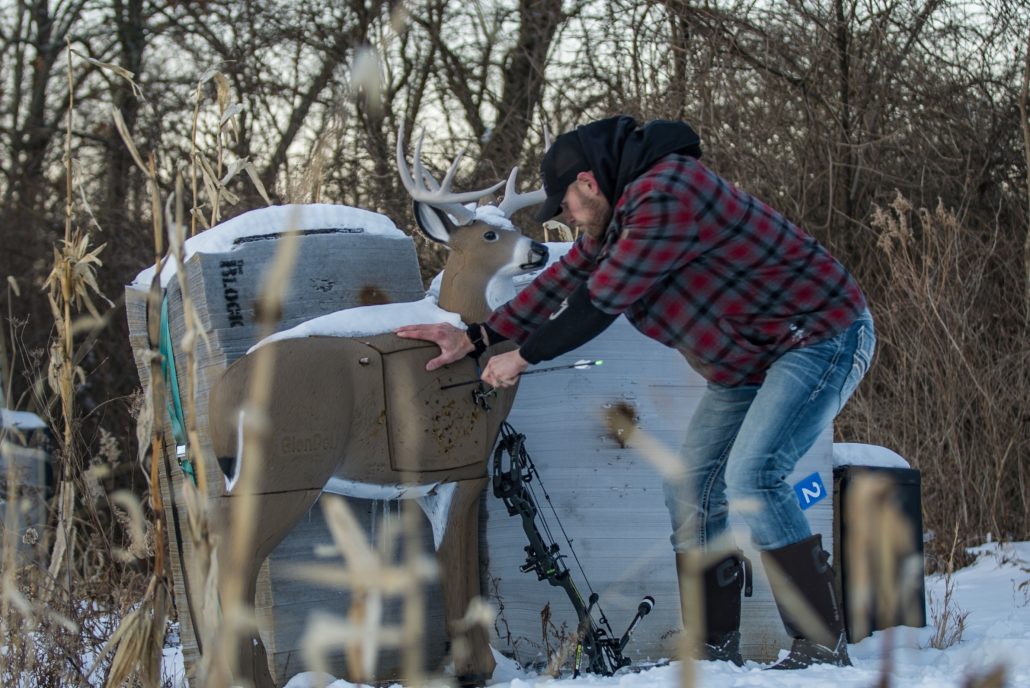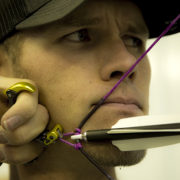“Archery Fit” Archery Tips | Fletching Arrows
Fletching Arrows | Fletching Jigs, Helical, and Offset Vanes
A direct comparisons can be made between a hand loaded rifle shell and an arrow when it comes to accuracy and group size. We all know rifle shooters who obsess over the combination of bullet weight, shape, design, amount of power, primers, built-up pressures, trajectories, and various combinations of all when seeking the ultimate load for a particular rifle. An archer seeking the best arrow for a particular bow or a specific purpose follows much the same path and the ability to fletch and refletch arrows as required is an important part of the process. A growing number of archers understand the advantage of fletching their own arrows. While buying finished arrows is quick and convenient it does not allow for custom tuning and is like buying “factory ammo” off the shelf. It works but does it provide the greatest accuracy and smallest groups?
Anatomy of a Hunting Arrow
An arrow is made up of several basic components. The arrow shaft, point weight and design, nock and fletching. When selecting an arrow shaft there are several considerations, shaft weight, straightness, stiffness or spine and the tolerance to which each shaft is held. Obviously the tighter the tolerance the closer matched the arrows will be in a given set. When it comes to arrow spine some shafts have indication marks which if aligned when fletched will position the stiffest portion of the arrow in same direction to increase the consistency of each shot.
Point weight is dependent upon the end use. Heavier points are often preferred by hunters seeking large game to increase penetration. Heavy points are also used by target shooters when shooing long distances in windy conditions to minimize wind drift. Lighter points are favorites of archers desiring to achieve maximum arrow speed and flatten trajectory. Changing point weight also impacts the spine, (stiffness), of an arrow and can be used to make minor changes when tuning a bow. The addition or removal of weight to the point can stiffen or weaken an arrow shaft and also impact the arrows FOC, (Front of Center balance point). The addition of weight weakens the spine and the removal of weight makes the arrow tune stiffer.
Nocks which are the smallest but important component are selected on arrow type and string fit. A nock must be just snug enough to remain on the string during the draw but leave the string with minimum interference upon release. Most quality nocks have a slight, “snap-on, feature which satisfies both requirements nicely. For most hunting arrows, most hunters also seek lighted nocks that cover these requirements.
Fletching
When it comes to fletching there are numerous styles on the market from which to choose. At one time natural turkey feathers were the accepted fletch and while they had the advantage of forgiveness when crossing the rest they were inconsistent in weight and thickness and did not perform well in wet weather. Feathers are still popular today especially among traditional shooter and in some cases indoor shooters looking for ultimate forgiveness or shooters desiring a large stabilizing fletch. Feathers were an important part of archery’s history and will always remain so but today’s plastic vanes control the largest market share. In addition to being weather resistant and much more durable then feathers, vanes are also consistent in shape, thickness and weight. These characteristic have greatly increased the ability of the archer to produce more closely matched arrows and tighter groups.
Vanes are available in a variety of shapes and lengths which offers the archer numerous options when selecting the vanes that will produce the tightest groups. In addition and equally if not more important is the angle at which the vane or fletch is applied to the arrow shaft. That angle can be varied from right to left with anything in between a slight offset to a hard helical. Fletch angle is directly associated with arrow spin and stabilization. The harder the angle and more helix applied the greater the generated spin which increases stability to a degree but which can also reduce speed impacting trajectory at long ranges. Fletch angle is a series of trade-offs and experimentation is required to determine what works best for what purpose.
All of these options are available to the archer that chooses to fletch their own arrows and it offers not only convenience but the ability to experiment with the combination of arrow components that produces the best results for the intended purpose.
An arrow set-up for indoor shooting is often different than an arrow set up for 3D or one set-up for long range target shooting. The same is true with hunting needs. A broadhead tipped arrow that is perfect for hunting whitetail at under 35 yards is different than the best arrow set-up for elk or caribou where a 65 yards shot is common. Could one arrow work for the various aforementioned examples? The answer is definitely yes, but that does not mean that one arrow is the best for all situations. The easiest way to find the best arrow for your specific set-up is fletch your own arrows which gives you the ability to experiment with different components to find the best arrow for your intended purpose. Fletching your own arrows gives the archer the same ability as the hand-loading rife shooter to find the best load for a particular rifle and purpose.
Whether you are interested in fletching your own arrows for convenience or in order to fine tune your set up it is basically simple and requires only a few tools the main one of which is a fletching jib. Fletching jigs come in various price ranges and designs. Some jigs fletch one fletch at a time while others can do three fletch at once. Actually the number of fletches applied should be the least consideration. When selecting a fletching jig it is important to select one that is easy to use and is accurate allowing the user to install each fletch in exactly the desired position and to repeat that for each vane including one that might have to be replaced in the future. This eliminates the need to strip all the vanes from any arrow requiring repair.
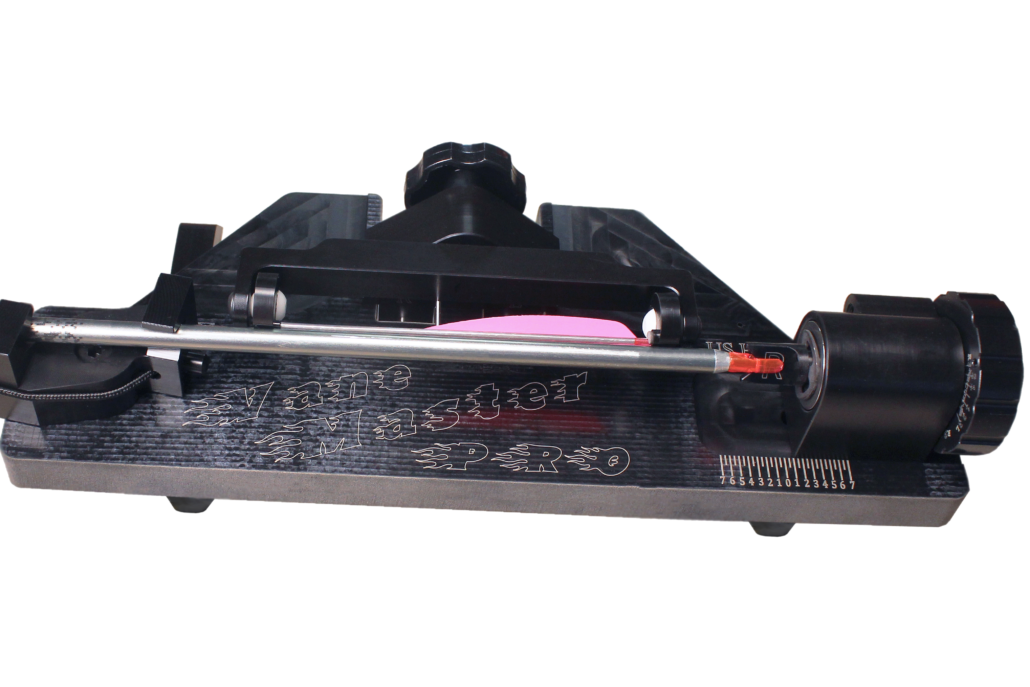
PHOTO: The Vane Master Pro, (VMP), fletching jig from Last Chance Archery is simple, flexible and easy to use. It is also extremely precise allowing for the accurate placement of vanes in any desired configuration.
One of the most accurate and versatile fletching jigs on the market today is the Vane Master Pro, (VMP), fletching jig from Last Chance Archery. The all-new Vane Master Pro is an innovative tool made to provide perfection and consistency when fletching arrow to arrow. The VMP is designed to accommodate every arrow size with little or no adjustment. Arrows can be fletched at 0-5 degree helical, left or right, with the ability to hold vanes up to 4 inches in length. This jig has the ability to fletch 3 or 4 fletch configurations (4 fletch knob sold separately) while using Vane Flat Technology. Vane Flat Technology uses two wires to hold the vane, allowing the clamp to perfectly contour around the shaft, for perfect vane adhesion every time. An optional crossbow adaptor has recently been added to the line-up which allows the VMP to be used to fletch crossbow arrows regardless of the style nock used. Last Chance Archery has upgraded its three fletch, or 120 degree knob for its VMP fletching jig. Not only can you now fletch 120 degrees spaced vanes while aligning your nock with your cock vane up, but you can also fletch 120 degrees and have your cock vane align at 90 degrees for recurve shooting or for those utilizing a rest requiring this nock positioning. This knob is standard on all new VMP jigs and is also available as a retro fit for older models.
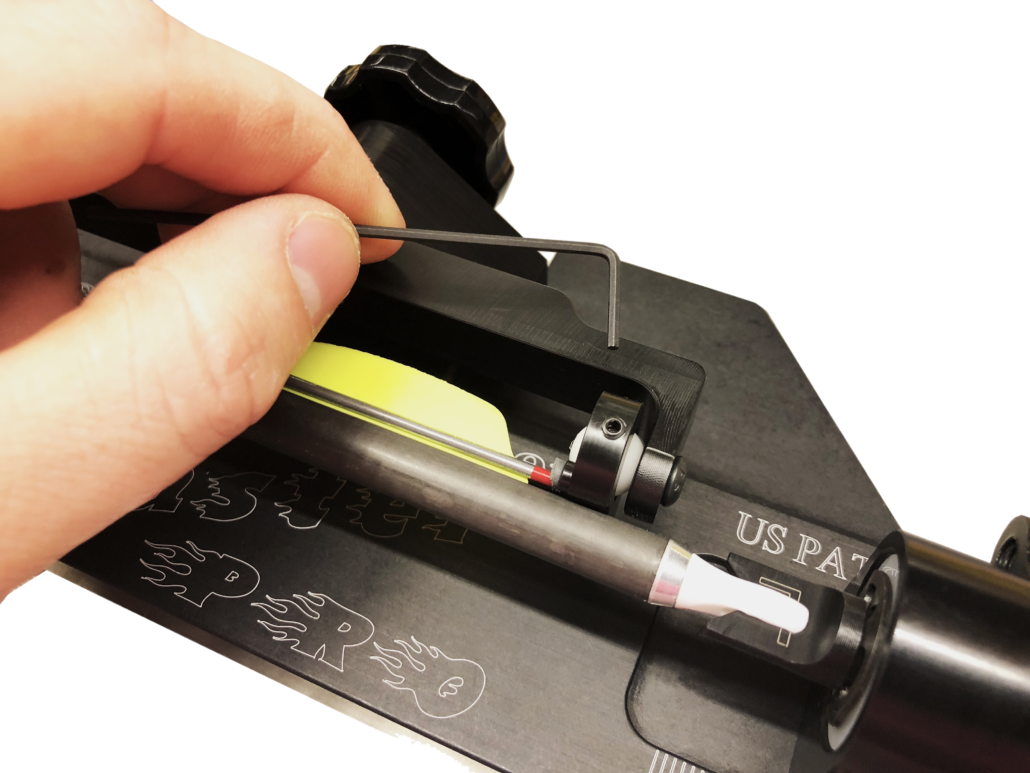
PHOTO: The VMP utilizes flexible wires to hold the vanes in the proper position during the fletching process. These flexible wires allow the vane to easily contour to the shaft surface regardless of shaft diameter and desired angle of vane ensuring accurate placement and maximum adhesion between the vane and shaft..
A precision tool like the VMP allows the archer to easily try different shapes and angles of vanes to determine which combinations produce the tightest groups as well as perform accurate vane replacement when required.
The choice in vanes is almost staggering with new ones being introduced continuously. While in some ways today’s vanes appear similar to the ones introduced years ago, the changes have been dramatic. Today’s vanes offer new technical shapes specifically designed to provide sufficient guidance and quick arrow correction with minimum drag. The material itself has greatly improved and now posses better memory avoiding vane distortion from pass-troughs. Today’s colors are widely varied and highly visible allowing for individual creativity for those with a flair for fashion. Recon Archery Products will be introducing a line of vanes shortly which will incorporate these features in a new highly efficient performance vane.
For those new to fletching the best advice is to pay attention to the fletching directions included with their shafts or vanes. Make sure shafts and vanes are clean before fletching, closely follow cleaning directions and use the recommended adhesive for trouble-free results.
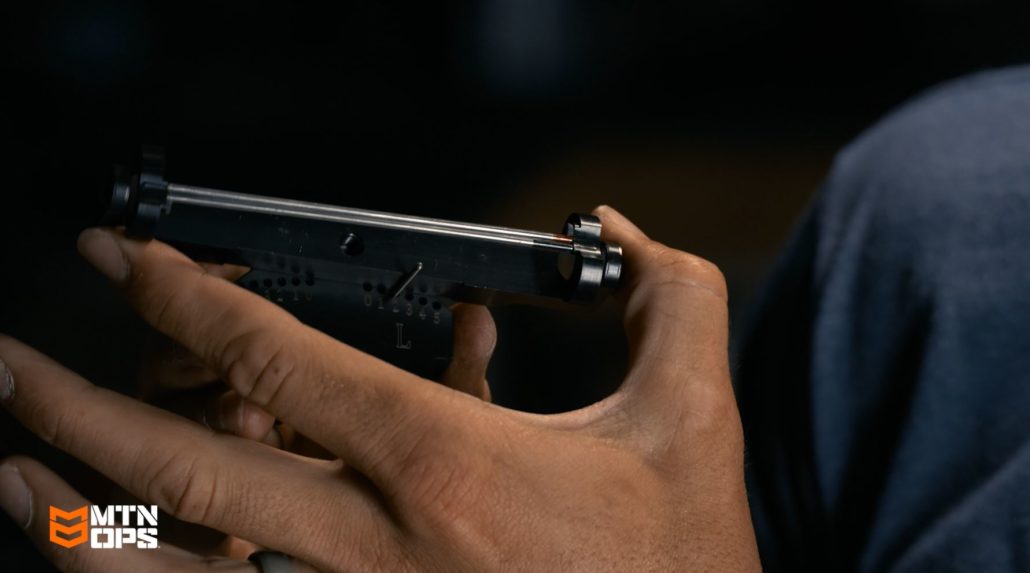
Photo: Levi Morgan shoots arrows with fletching that has a 2 degree offset as he shoots long distance most of the time. Unless you are shooting a light arrow it is hard to put a lot of helical or offset to arrows as once the arrow gets passed 50- 60 yards it begins to over control the arrow. This is called the arrow parachute effect, essentially the back of the arrow slows creating an arrow that has decreased accuracy.
Fletching arrows yourself allows you to control the end quality of your arrow as well as try different combinations of vanes, shafts, points and nocks to develop the best finished arrow for your intended purpose, tightening your groups, putting more points on your score card and bigger trophies on your wall. It is definitely worth the extra effort.

